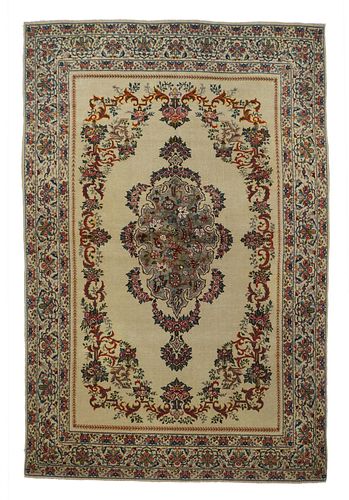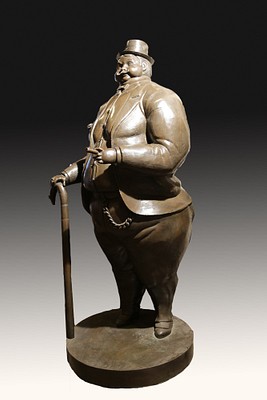Antique Tehran Rug, 4'5" X 6'8"
Lot 117
About Seller
1stbid
232 E 59th St
New York, NY 10022
United States
1stbid is a leading auction house specializing in authentic antique and vintage hand-woven rugs, as well as a curated selection of objets d'art from around the world. Our collection is carefully hand-picked and assessed by proprietor Victor Mashihi, whose family has been in the business of selling r...Read more
Categories
Estimate:
$10,000 - $12,000
Absentee vs Live bid
Two ways to bid:
- Leave a max absentee bid and the platform will bid on your behalf up to your maximum bid during the live auction.
- Bid live during the auction and your bids will be submitted real-time to the auctioneer.
Bid Increments
| Price | Bid Increment |
|---|---|
| $1,000 | $100 |
| $2,000 | $150 |
| $5,000 | $250 |
| $10,000 | $500 |
| $20,000 | $1,000 |
| $30,000 | $2,000 |
| $50,000 | $5,000 |
| $100,000 | $10,000 |
About Auction
By 1stbid
Jun 5, 2022
Set Reminder
2022-06-05 14:00:00
2022-06-05 14:00:00
America/New_York
Bidsquare
Bidsquare : Rarities from Around the World. Finest Rugs & Art including NFTs at NO Extra Charge
https://www.bidsquare.com/auctions/fine-rugs-of-chevy-chase/rarities-from-around-the-world-finest-rugs-art-including-nfts-at-no-extra-charge-9344
Rarities from Around the World Finest Rugs & Art including NFTs at NO Extra Charge. 1stbid info@1stbid.com
Rarities from Around the World Finest Rugs & Art including NFTs at NO Extra Charge. 1stbid info@1stbid.com
- Lot Description
The pale straw semi-open field differs oh so slightly [at least in the picture] from the sandy-straw border ground. A floating oval wreath of palmettes, forked and curled leaves and arabesque bits expands at the corners and is amplified by complex palmettes at the long field ends. In the centre is an elliptical twelve flame-lobed medallion enclosing an asymmetric flower pattern, and it is edged by floriate swags and racemes. The pendants, usually so salient in most Persian medallion rugs, have shrunk and have been detached outside the racemes at each medallion end. A diminutive arrowhead chain runs around the field just inside the border system. The pattern is not traditionally Persian, nor is it Western in the Aubusson-Savonnerie-Art Deco-Moderne sense either. Persian urban carpets of this transition period, whether from Tabriz, Kashan, Kerman or Tehran, are often luxurious, technically accomplished, artistically refined productions just “Oriental†enough to be recognizable, yet pointing toward a real, deep style change which will be manifested much more widely after WWII and especially in the 1960’s. The sandy ivory tripartite border system shows matching minors with reversing palmettes, and a main stripe with reversing petal palmettes on a bracketing vine meander. Detail tones include: green, dark brown, ivory, light blue and lemon yellow, among others, more than a dozen in all. Crisp tones and well-defined applications. The weave is particularly fine, with a short clipped, erect pile of excellent, resilient wool, on an all-cotton foundation in asymmetric (Persian) knots. [N.B. to Victor and Bardia. I have been using the Excel spreadsheet type attributions and corresponding numbers. Tell me if I have been doing something wrong. In some cases, the rug images clearly do not match the spreadsheet rug names, as in no. 106.]Good. Please contact our rug department at info@1stbid.com or you may also call +1-917-623-6308 (also on WhatsApp for international) for any additional information.
Condition
- Shipping Info
-
Please contact us ahead of any of our auctions regarding any available shipping options we may have. All shipping, packaging and handling costs are the responsibility of the bidder/purchaser/buyer.
-
- Payment & Auction Policies
-
Available payment options
-
- Buyer's Premium



 EUR
EUR CAD
CAD AUD
AUD GBP
GBP MXN
MXN HKD
HKD CNY
CNY MYR
MYR SEK
SEK SGD
SGD CHF
CHF THB
THB


















